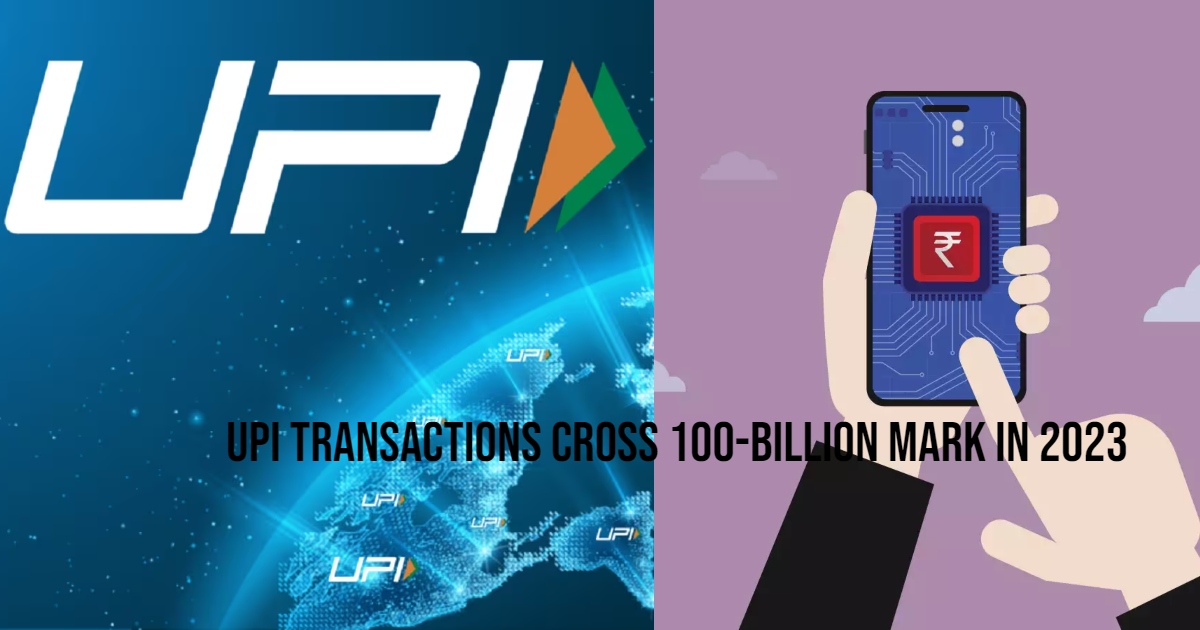The achievement of the 100-billion transaction mark by the Unified Payments Interface (UPI) in 2023 is indeed a significant milestone, marking its pivotal role as the linchpin of India’s financial inclusion efforts. This accomplishment reflects the transformative impact of UPI on the Indian economy and society. In this article, we will delve into the key drivers fueling UPI’s meteoric rise, examine its profound effects on various sectors, and contemplate the trajectory that lies ahead for this revolutionary payment platform.
The Rise of the Digital Rupee: Unpacking the UPI Boom
Several factors have coalesced to fuel UPI’s phenomenal growth:
- Simplicity and Convenience: UPI boasts an intuitive interface, eliminating the need for cumbersome bank account details and offering seamless peer-to-peer (P2P) transactions through just a virtual payment address (VPA). This user-friendliness has made it accessible to even the tech-unsavvy.
- Interoperability and Open Architecture: Unlike proprietary payment systems, UPI operates on an open network, allowing users to transact across different banks and apps, fostering competition and driving innovation.
- Government Push and Digital Infrastructure: The Indian government’s proactive promotion of digital payments, coupled with initiatives like Bharat Interface for Money (BHIM) and Jan Dhan Aadhaar linking, have laid the groundwork for UPI’s success.
- Mobile Phone Penetration and Data Revolution: The ubiquity of smartphones and affordable data plans has empowered rural and urban populations alike to embrace digital payments, opening up a vast new user base for UPI.
- E-commerce and the Gig Economy: The burgeoning e-commerce sector and the growing gig economy rely heavily on fast and secure digital transactions, further fueling UPI’s adoption.
Beyond Numbers: The Socio-Economic Impact of UPI’s Journey
UPI’s impact extends far beyond mere transaction volumes. It has:
- Promoted Financial Inclusion: UPI has brought millions, especially unbanked and underbanked individuals, into the formal financial system, fostering financial literacy and empowering them to participate in the digital economy.
- Boosted Small Businesses: By reducing transaction costs and facilitating cashless payments, UPI has empowered small businesses and informal vendors, expanding their customer base and enhancing their financial management.
- Driven Transparency and Reduced Corruption: Digital transactions through UPI leave auditable trails, reducing reliance on cash and combating corruption in everyday transactions.
- Empowered Women: UPI has given women, often excluded from traditional financial systems, increased control over their finances and economic independence.
- Streamlined Government Disbursements: The government utilizes UPI for direct benefit transfers (DBTs) to beneficiaries, ensuring greater transparency and efficiency in social welfare programs.
Challenges and Opportunities: Navigating the Road Ahead
While UPI has undoubtedly achieved remarkable success, it is not immune to challenges that demand ongoing attention:
- Cybersecurity Threats:With the increasing reliance on digital payments, safeguarding against cyber threats and addressing online financial fraud becomes paramount. A robust cybersecurity infrastructure is essential to maintain user trust.
- Digital Divide: Bridging the digital divide, especially in rural areas, remains a significant challenge. Efforts to enhance internet connectivity and digital literacy are essential to ensure that UPI’s benefits reach all segments of society.
- Regulatory Gaps:The dynamic nature of the digital payments landscape requires agile regulatory frameworks. Policymakers need to adapt swiftly to address potential risks, foster innovation, and ensure consumer protection in this evolving ecosystem.
- Competition and Sustainability: UPI’s dominance faces challenges from emerging technologies and private wallets. Sustaining its position necessitates continuous innovation, development, and adaptability to stay ahead in a competitive landscape.
Addressing these challenges will be crucial for UPI to maintain and enhance its transformative impact on India’s financial landscape.
The Future of Payments: UPI and Beyond
The next chapter for UPI promises exciting possibilities:
- Integration with Blockchain: Exploring blockchain technology for secure and transparent micropayments can further incentivize adoption and foster financial inclusion.
- AI-powered Personalization: Leveraging AI to personalize financial offerings and provide micro-credit and insurance, tailored to individual needs, can unlock new frontiers for financial services.
- Offline Payments: Developing offline transaction models for areas with limited internet connectivity can ensure wider reach and inclusivity.
- International Expansion: Exploring collaborations with other countries for cross-border transactions can pave the way for UPI to become a global payment solution.
Conclusion: A Paradigm Shift in the Making
Indeed, UPI’s meteoric ascent represents a paradigm shift in India’s financial terrain. This revolutionary platform’s empowerment of individuals, businesses, and the government has the potential to catalyze inclusive economic growth, foster social progress, and enhance financial empowerment. As India confronts challenges and seizes opportunities, UPI emerges as a transformative force shaping the future of payments, not only within the country but potentially influencing global payment landscapes.

